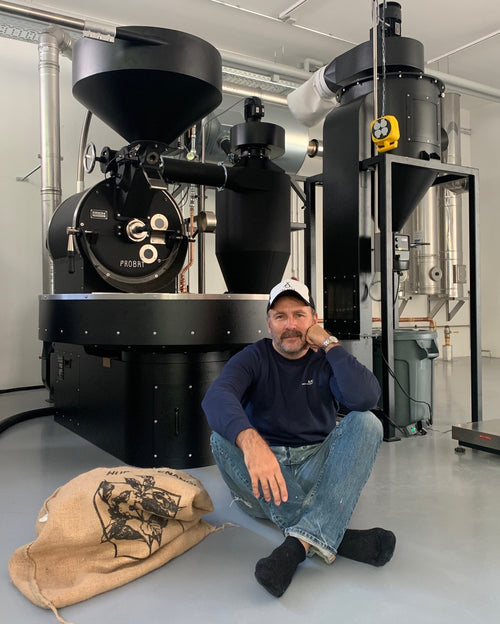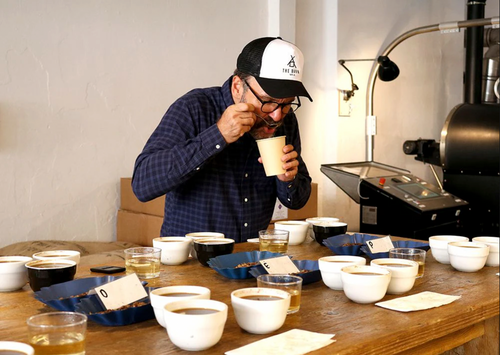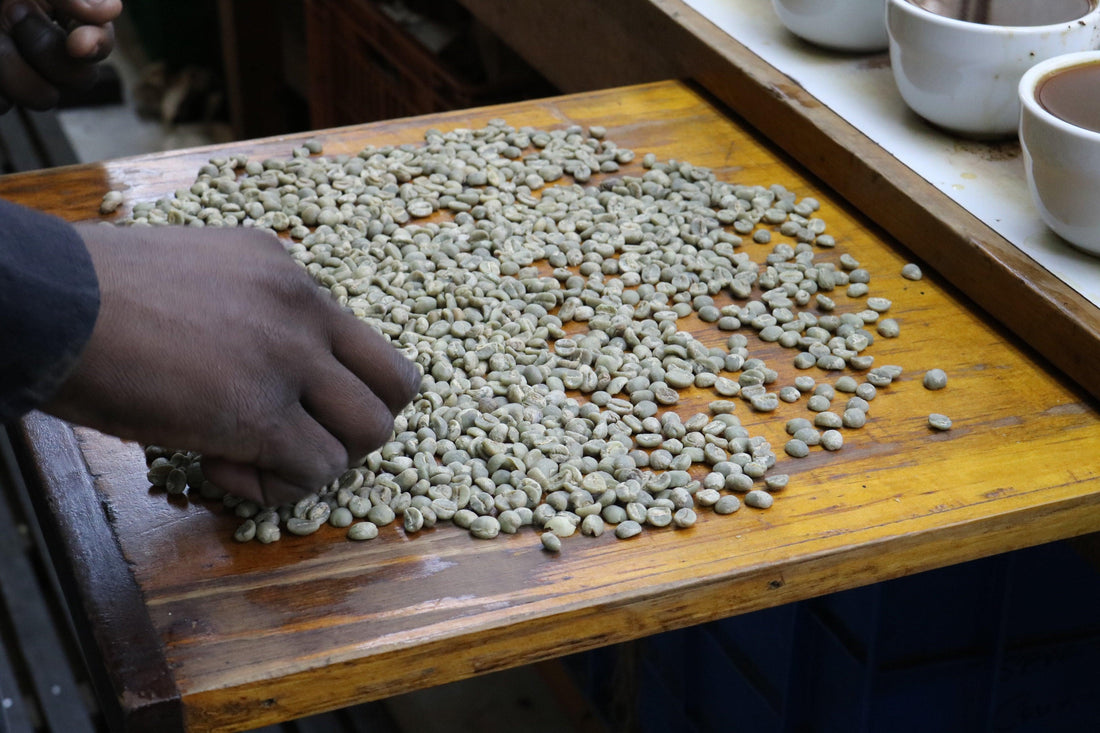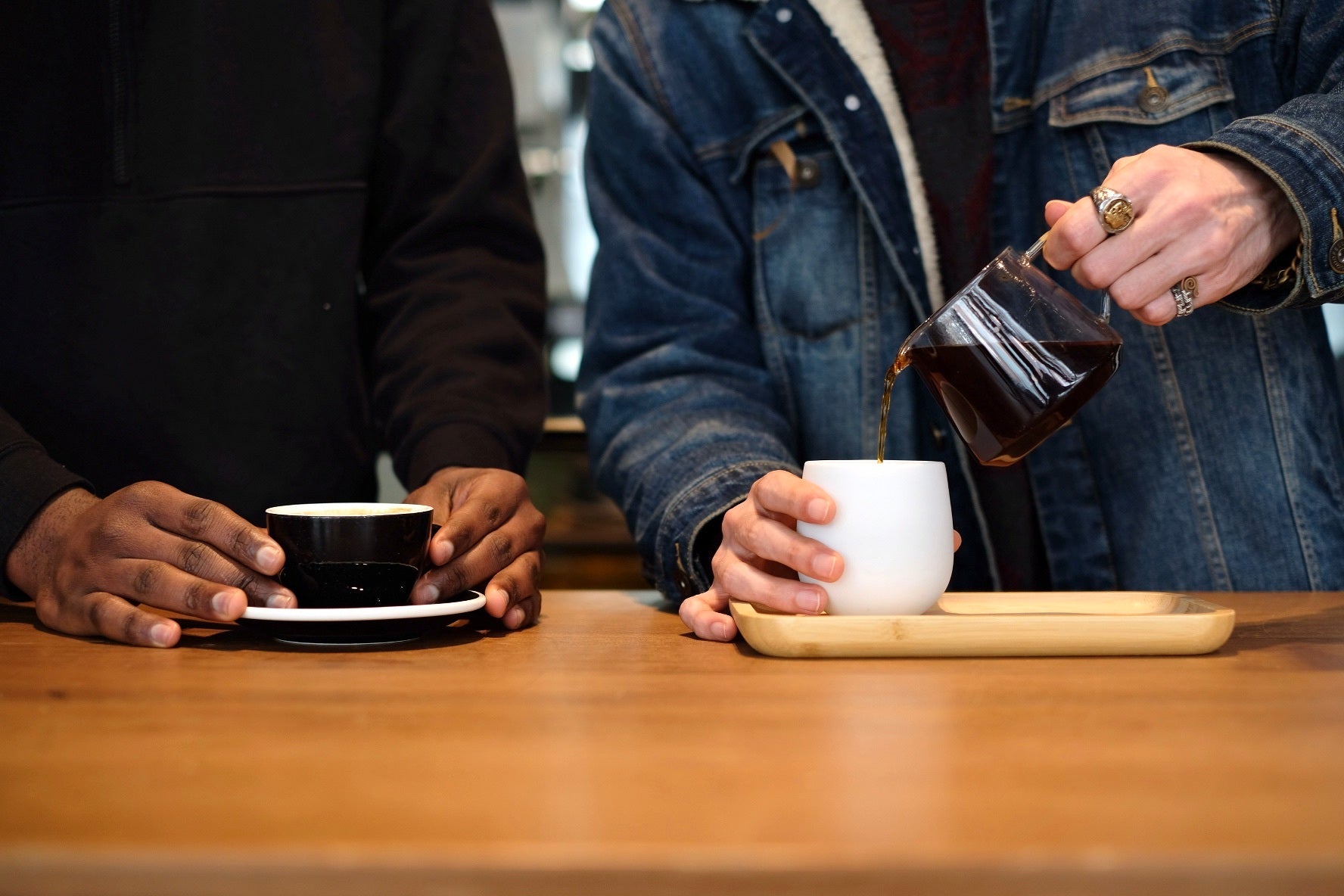Fazenda Ambiental Fortaleza (FAF) is a coffee farm, research centre, and development lab in Brazil, owned and operated by Sylvia and Marcos Croce, alongside their son Felipe. Their mission is to promote quality, organic, sustainable coffee in Brazil - and find other farmers with the same desire, and educate them around this.
FAF has a "passion for providing a high quality product that takes sustainability seriously both socially and environmentally", and it shows - which obviously resonated with our own values as a roastery. The sacrifices they made to turn the FAF farm organic were huge, but they paid off. We have worked with them and the farmers they support for five years now, and the quality improved so much year after year that today, Brazil is one of our key regions. Every time Ralf visits, people ask him to go back to Europe and let everyone know there is now quality coffee in Brazil!
We work with a lot of small farmers who do not have an export license, which is where exporters like FAF come in. But this is not the only reason we create a triangle partnership with farmers and exporters: They have agronomy capacities, advise and train the farmers. They pre-finance the harvest, offer cheaper credit solutions for investments - and they build the important link from farmer to roaster. We only work with exporters that we fully trust and that build the local, trustworthy relationship that elevates the farmer to higher quality levels.
The Water Treatment Sustainability Project is one of the first sustainability projects we have been directly involved in. This latest update on the project was compiled for us by FAF.
Using Fazenda Ambiental Fortaleza as a model, the Water Treatment Sustainability Project is an initiative to bring the same level of water cleanliness, treatment, and conservation to participating producers. By partnering with THE BARN, along with local government and the producers themselves, the Water Treatment Sustainability Project can make a difference in water quality for the environment, their neighbours, and their grandchildren.

PROJECT 1
SERRA DO CIGANO. WATER TREATMENT GARDEN - SITIO SERIEMA
Ivan & Rose have been farming their own property on the mountain since 2008. They both grew up in coffee farming families and are expecting their first child this year. With a growing family the need for proper waste water treatment becomes even more important. As with many properties in the area, the farm relies on a simple septic tank treatment system. Long term, there are risks to the surrounding rivers and streams as this type of waste treatment is slow and prone to leaks.
OBJECTIVE
To provide simple, low-cost and effective treatment of household waste (grey and black water) for a single-family residence that currently relies on an unprotected septic system.
EXECUTION
Step One:
Grease Trap
A simple grease trap is installed that catches the grey-water solids from the kitchen. This allows for a preliminary treatment of the grey water before it flows to the Bio-digester Septic Tank.
Step Two:
Bio-digester Septic Tank
Black water waste flows directly into the Bio-digester Septic Tank and is mixed with the output from the grease-trap. Slightly more complicated than a normal septic tank, it decomposes the waste much more efficiently and allows the solids to be removed by gravity - so instead of a removal service with a tank and pumps, the property owner can do this annually and can store the solids in a drying tank on the premises. This then becomes compost!
Step Three:
Wetland Filtration System
This is a planted living garden that receives the liquids from the bio-digester and filters them through the root-system and soils of the garden. Two gardens are planted. The first has a protective sheeting surrounding the plants that protects the local eco-system from the water being treated. The second garden receives the relatively clean water and returns the final treated liquids to the environment via infiltration and evaporation.
COSTS
| PHASE | DESCRIPTION | $USD |
| Planning & Execution | Project development, execution and monitoring | 1700 |
| Materials & Labour | Grease trap and piping | 300 |
| Bio-digester septic tank | 700 | |
| Wetland filtration garden | 3000 | |
| Waste solid storage | 200 | |
| TOTAL | 5.900 |
CURRENT STATUS
| Project Planning | 100% complete |
| Material Purchase | 100% complete |
| Construction Phase | 100% complete |
| Monitoring/Training | In progress |
This is the heart of the system that takes all the waste water from the farm and accelerates the decomposition process. Once this was accomplished the adjacent inspection boxes that had been pre-cast in concrete could be lowered in. To the left is the inspection tank that collects waste water coming from the farm house. Above the bio-digester is the collection tank where once a year the safely decomposed solid waste is released. To the right is the collection tank where the semi-treated liquids are passed to the first filtration garden.
Plastic barrels with dispersion pipes were buried in the gardens to help the flow of liquids through the system.
Updates on Ivan and Rose's work will follow! Look out for part two of the sustainability project overview, online soon.











